The industrial style has captured the hearts of many for its rugged charm, raw materials, and minimalist appeal. Transforming your bedroom into an industrial retreat doesn’t have to involve a major renovation or an overwhelming budget. With a few thoughtful choices, you can achieve a stylish industrial bedroom that balances functionality with urban sophistication.
Here’s how to create an industrial bedroom with minimal effort, using easy-to-implement ideas that deliver maximum impact.
1. Start With an Industrial Color Palette
An industrial bedroom begins with the right color scheme. Stick to neutral, earthy tones that set the stage for raw materials and minimalist decor.
Ideal Colors for an Industrial Bedroom:
- Gray: From soft dove gray to deep charcoal.
- Black: Use sparingly for accents and contrast.
- White: Brightens the space and balances darker elements.
- Taupe and Beige: Warm neutrals to soften the industrial look.
- Brown: Introduced through wood or leather tones.
Pro Tip: Use a simple gray or white wall color as a base, then layer in deeper tones through furniture and accessories.
2. Incorporate Raw Materials
The hallmark of industrial design is its celebration of raw and rugged materials. Integrating these into your bedroom design adds instant authenticity.
Key Materials:
- Exposed Brick Walls: If real brick isn’t an option, try brick-effect wallpaper.
- Concrete: Use polished concrete floors or concrete-effect paint for walls.
- Wood: Opt for raw or reclaimed wood in furniture and decor.
- Metal: Add black iron or steel through lighting, frames, or shelving.
Pro Tip: A mix of wood and metal creates a balanced, cohesive industrial aesthetic.
3. Choose Simple Industrial Furniture
Industrial furniture is typically practical, sturdy, and minimalist in design. Select pieces that are both functional and visually striking.
Must-Have Industrial Bedroom Furniture:
- Platform Bed: A wood or metal-framed bed with clean lines.
- Nightstands: Reclaimed wood or black metal side tables.
- Dressers: Metal-fronted drawers or wood dressers with industrial hardware.
- Open Wardrobes: Pipe-frame clothing racks for a minimalist storage solution.
Pro Tip: Look for furniture that combines wood and metal for an authentic industrial vibe.
4. Keep the Bedding Neutral and Textural
Bedding in an industrial bedroom should be understated and focus on neutral tones. Use textures to add warmth and coziness.
Bedding Tips:
- Use linen, cotton, or canvas fabrics for a casual, lived-in feel.
- Stick to a neutral palette with shades of gray, white, or taupe.
- Add a chunky knit throw or a textured blanket for warmth.
- Layer neutral-toned cushions in varying materials like leather or jute.
Pro Tip: A simple, monochromatic bedding scheme complements the industrial aesthetic while keeping the space uncluttered.
5. Add Statement Industrial Lighting
Lighting is a key feature of industrial interiors, often doubling as functional decor. Focus on fixtures that highlight the raw materials of the style.
Lighting Ideas:
- Pendant Lights: Metal shades or caged designs above the nightstands.
- Wall Sconces: Industrial sconces in black or brass mounted by the bed.
- Table Lamps: Lamps with exposed Edison bulbs for a vintage touch.
- String Lights: Add a cozy, modern twist with simple string lights draped along a wall or headboard.
Pro Tip: Opt for warm-toned bulbs to create a cozy atmosphere that balances the rugged industrial elements.
6. Introduce Open Shelving
Open shelving is both functional and decorative in an industrial bedroom. It’s perfect for displaying books, plants, or decor pieces while keeping the design minimalist.
Shelf Ideas:
- Wood and Pipe Shelves: Mount reclaimed wood planks on black pipe brackets.
- Floating Shelves: Use wood or metal floating shelves for a sleek look.
- Industrial Cabinets: Combine shelves with lockers or metal storage units.
Pro Tip: Keep shelves uncluttered with a curated selection of decor to maintain a clean, streamlined appearance.
7. Add Texture With Rugs and Curtains
Soft furnishings like rugs and curtains balance the rawness of industrial materials, adding texture and warmth to your bedroom.
Textile Ideas:
- Rugs: Opt for neutral tones or distressed patterns in jute, sisal, or wool.
- Curtains: Use linen or canvas curtains in beige, gray, or white for a soft yet industrial look.
- Layering: Add a second, smaller rug over the main one to introduce more texture.
Pro Tip: Stick to understated patterns like stripes or solids to keep the focus on other industrial features.
8. Decorate With Industrial Accessories
Accessories are the finishing touch that bring personality to your industrial bedroom. Choose pieces that enhance the overall vibe without creating clutter.
Accessory Ideas:
- Metal Wall Art: Hang minimalist black metal sculptures or geometric shapes.
- Vintage Decor: Add old clocks, typewriters, or metal signs for a nostalgic touch.
- Planters: Use black, concrete, or terracotta pots for greenery like succulents or ferns.
- Mirrors: Go for black-framed or windowpane mirrors to reflect light and add depth.
Pro Tip: A single statement piece, like a large clock or an oversized piece of wall art, can define the space without overwhelming it.
9. Use Greenery to Soften the Space
Plants are a great way to add a touch of life and color to an industrial bedroom. Their organic shapes and textures contrast beautifully with the raw materials.
Best Plants for Industrial Bedrooms:
- Snake Plants: Low-maintenance and perfect for minimalist design.
- Pothos or Ivy: Trail them from shelves or hanging planters for visual interest.
- Cacti and Succulents: Compact and stylish for smaller spaces.
Pro Tip: Use simple planters in metal, concrete, or neutral colors to match the industrial palette.
10. Create a Focal Point With an Accent Wall
An accent wall is an easy way to add visual interest and make your industrial bedroom stand out.
Accent Wall Ideas:
- Brick: Exposed or faux brick for an authentic loft look.
- Wood: Reclaimed wood planks arranged horizontally or vertically.
- Concrete: Polished or textured concrete for a modern edge.
Pro Tip: Keep other walls simple and neutral to let the accent wall shine as the room’s focal point.
Picture Gallery
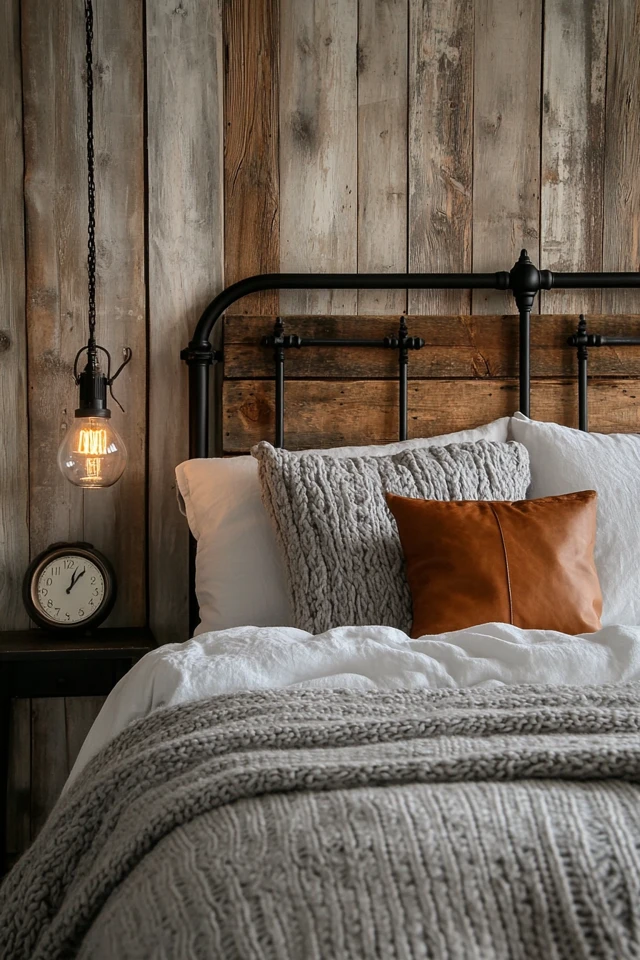
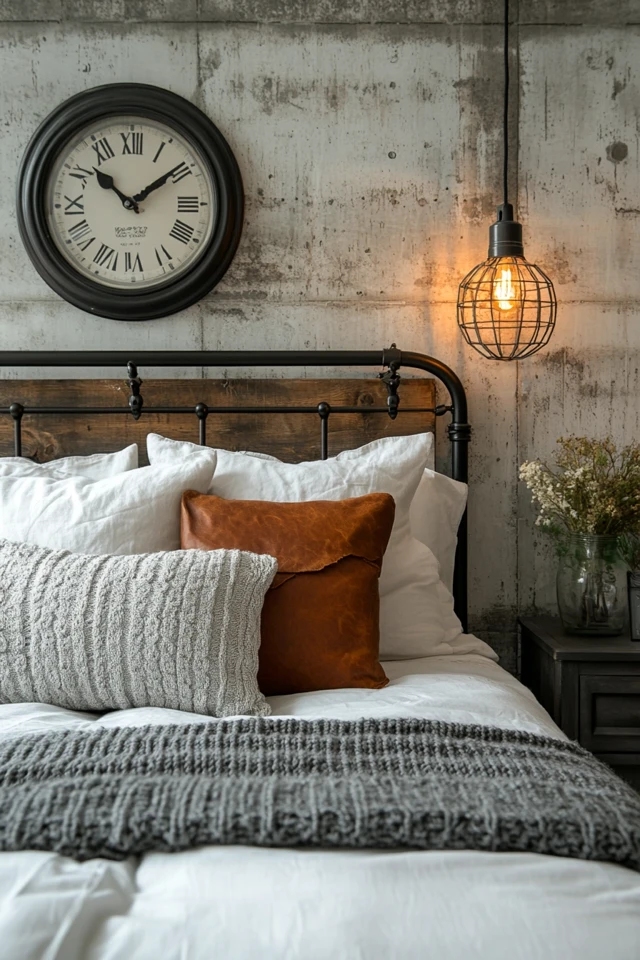
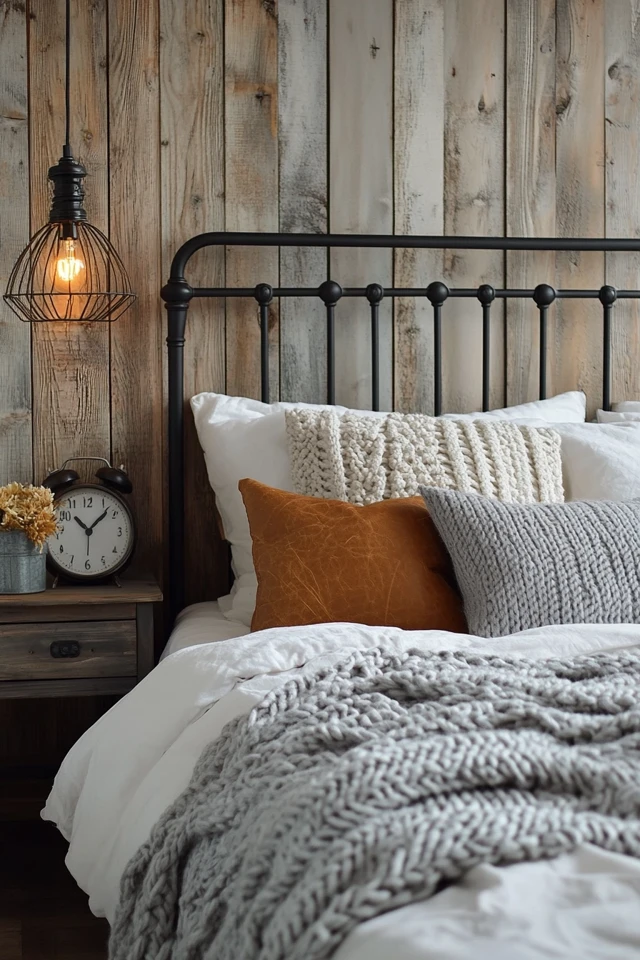
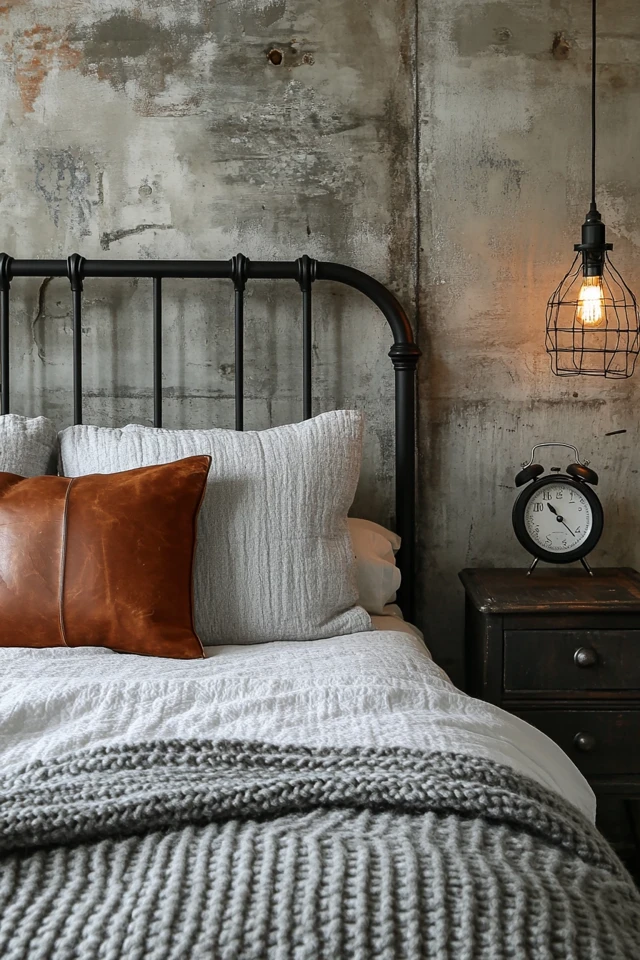
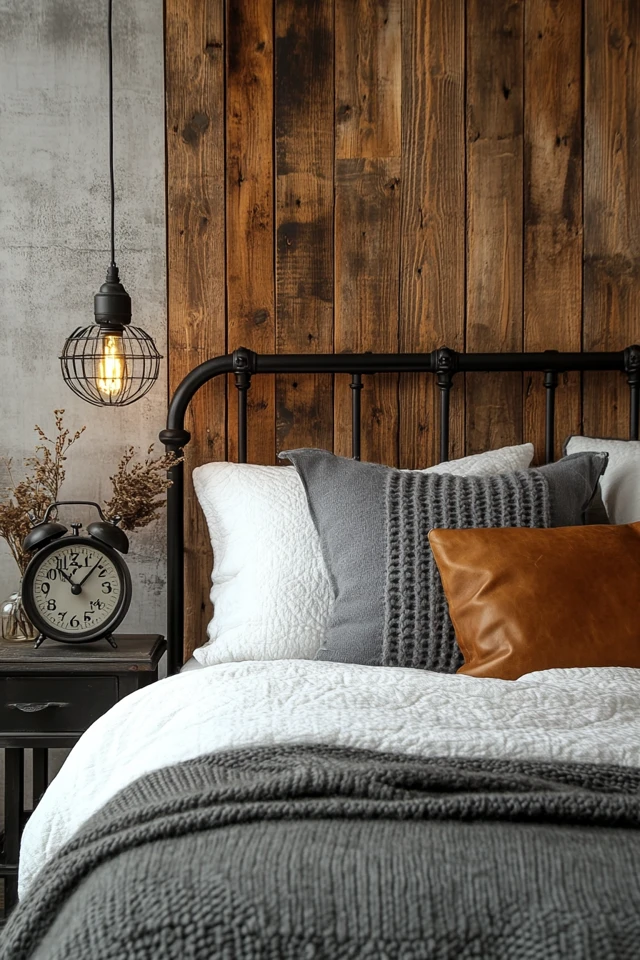
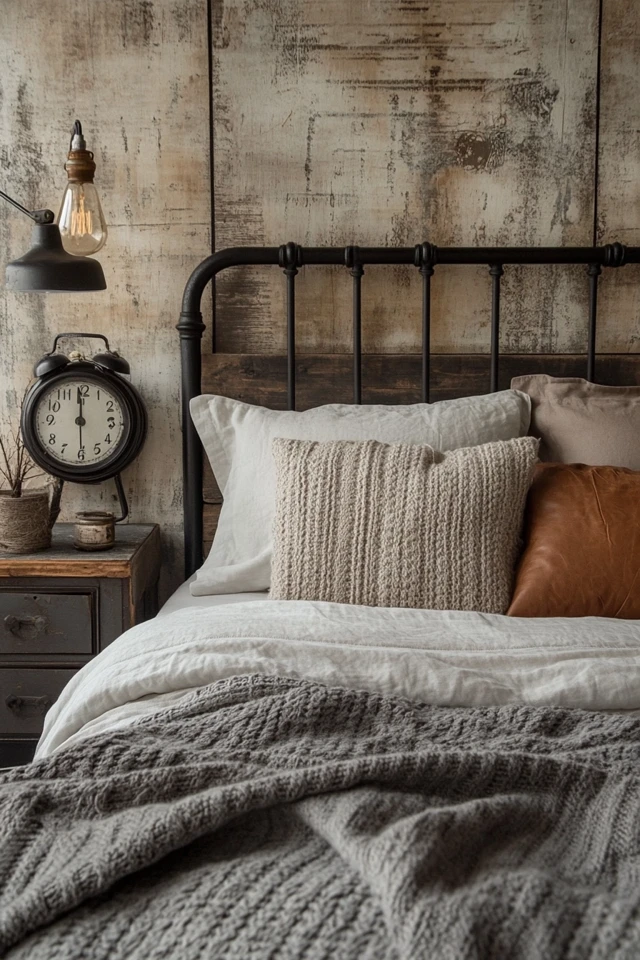
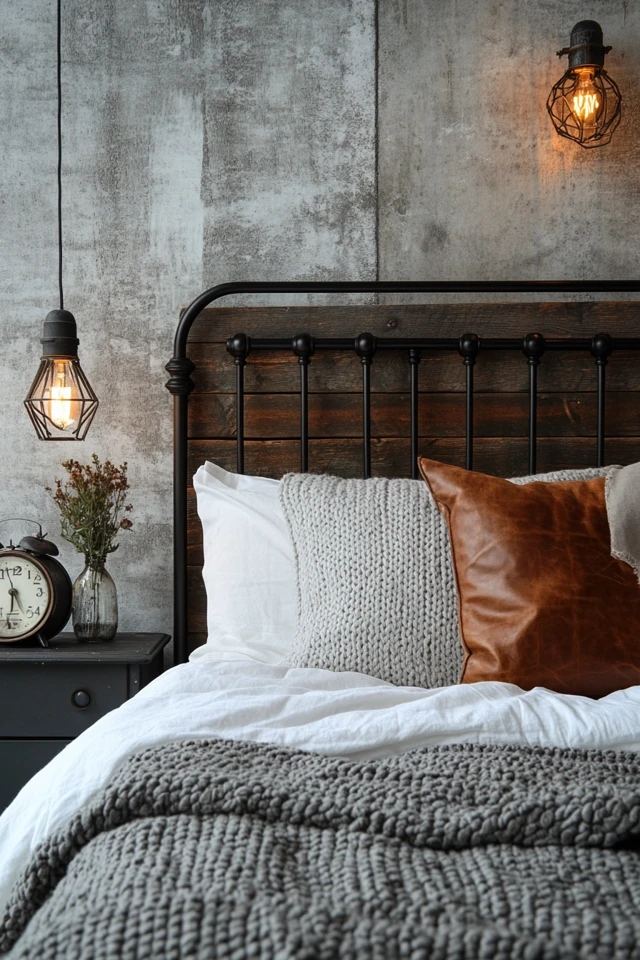
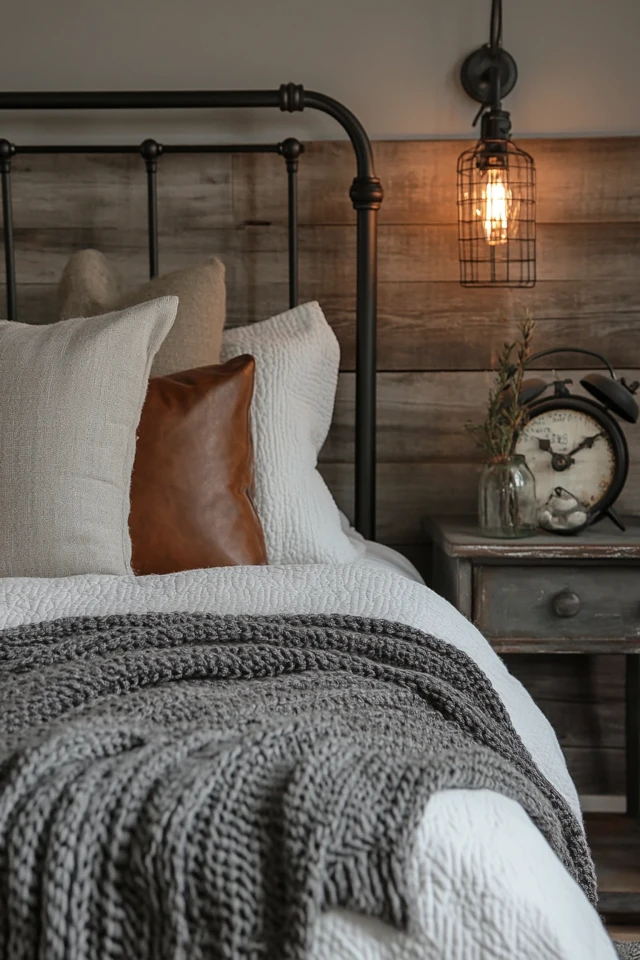


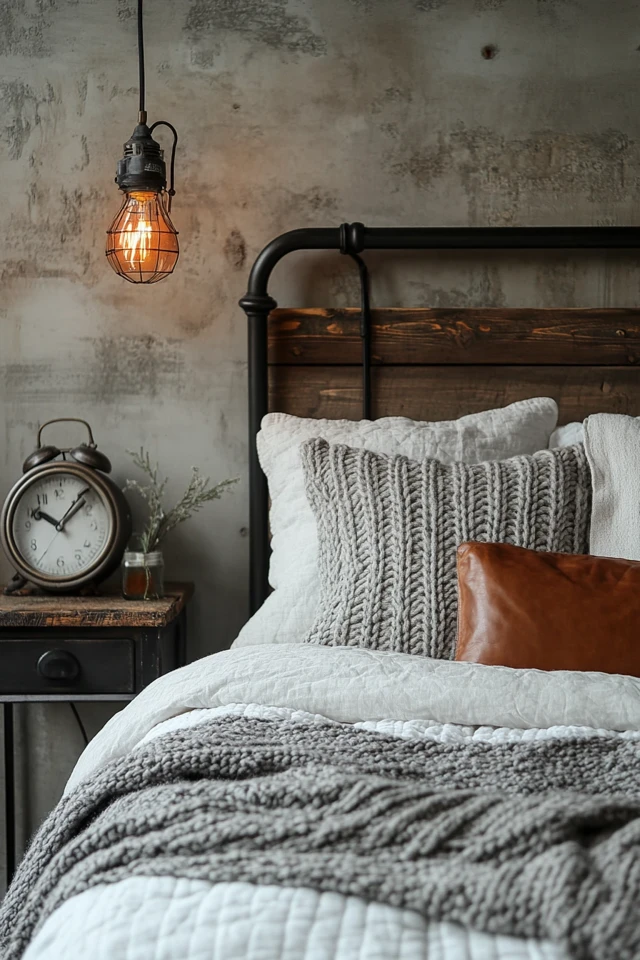
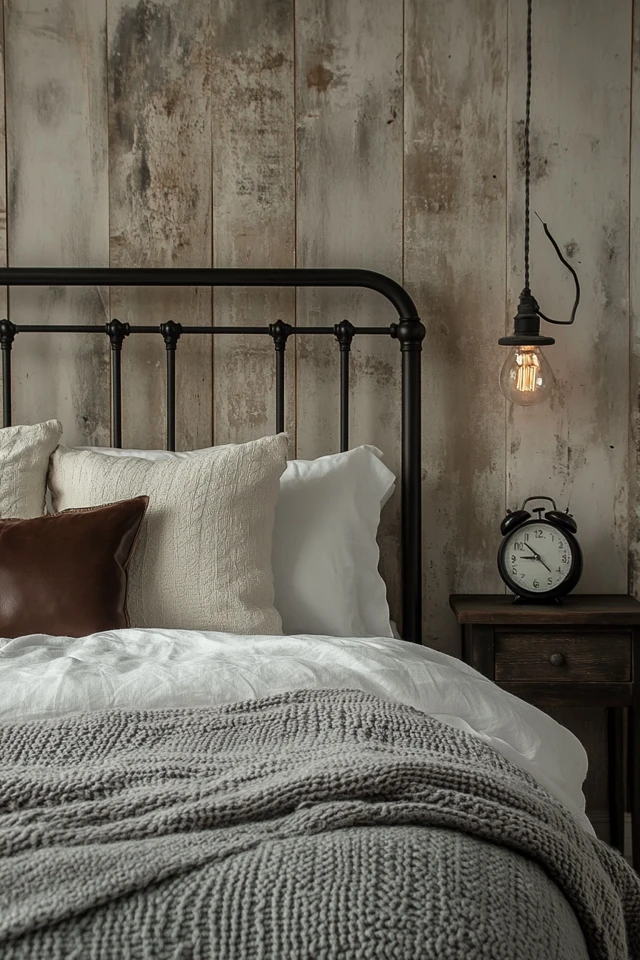
Conclusion
Creating an industrial bedroom with minimal effort is all about using a neutral palette, raw materials, and minimalist furniture to achieve a balanced and stylish space. By incorporating key elements like exposed brick, industrial lighting, and curated accessories, you can design a room that feels both modern and inviting.
With these tips, you’ll have a bedroom that combines the rugged charm of industrial design with the warmth and comfort needed for a restful retreat.
FAQ
1. What are the must-have elements in an industrial bedroom?
Exposed brick, metal accents, reclaimed wood furniture, and industrial lighting are essential components of an industrial bedroom.
2. Can I create an industrial look in a small bedroom?
Absolutely! Use light neutral tones, minimal furniture, and vertical storage like pipe shelving to maximize space while keeping the industrial aesthetic intact.
3. What type of bedding works best for industrial bedrooms?
Neutral, textured fabrics like linen, cotton, or canvas are ideal for creating a casual yet stylish look.
4. How can I add warmth to an industrial bedroom?
Incorporate soft textures like rugs, throws, and cushions, and use warm lighting to balance the rugged materials.
5. Do I need exposed brick to create an industrial look?
Not necessarily. You can achieve a similar effect with brick-effect wallpaper, concrete walls, or wooden paneling as an alternative.


